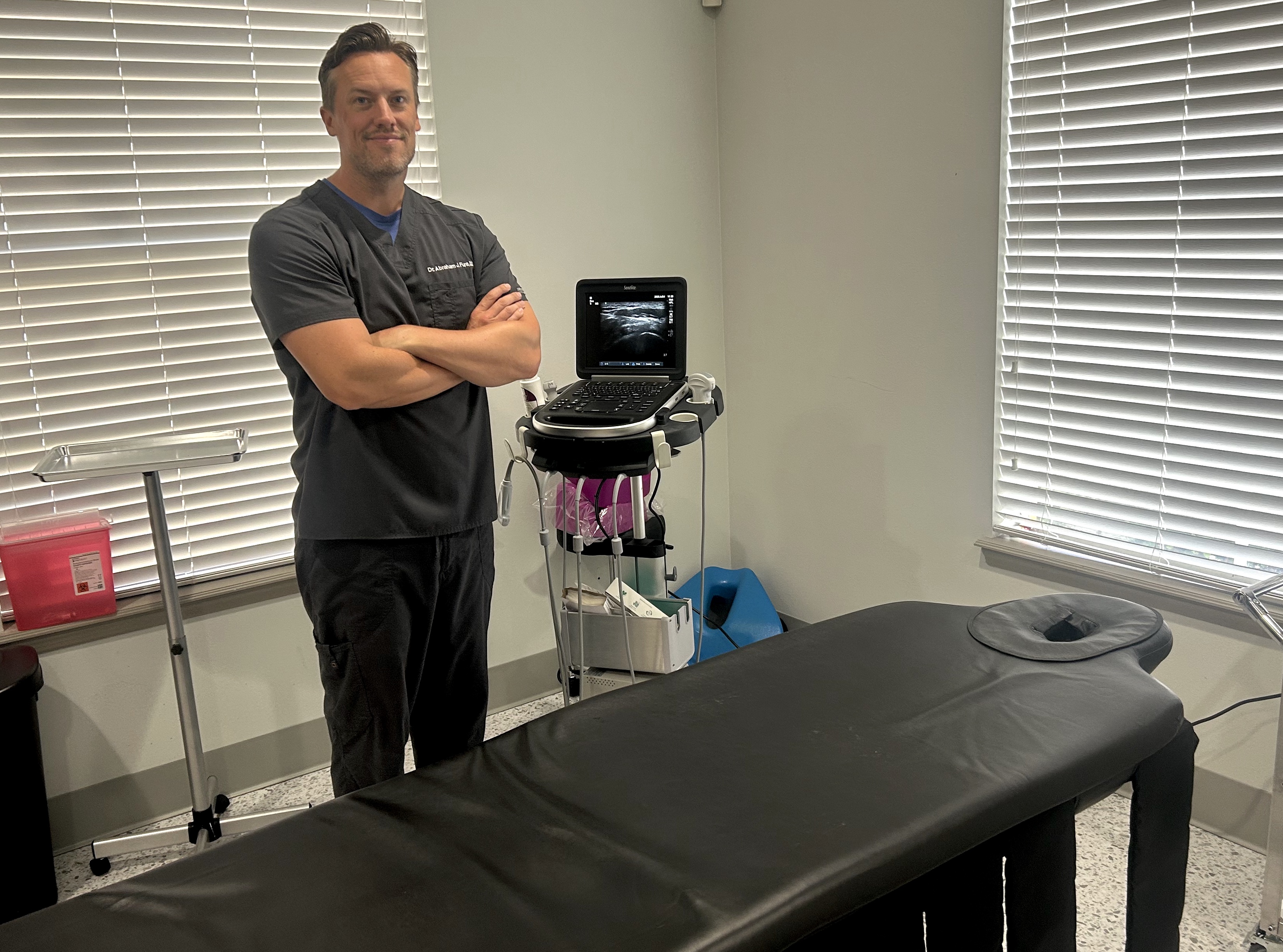
TREATMENT OVERVIEW
Minimally Invasive Sacroiliac (SI) Joint Fusion is a surgical procedure that provides a permanent solution for chronic SI joint pain. For patients whose pain is confirmed to originate from the SI joint and has failed to respond to conservative care, this procedure stabilizes the joint by fusing it, thereby eliminating the painful motion that causes discomfort and restoring function.


PROCEDURE DETAILS
SI Joint Fusion is a surgical procedure performed in an operating room under general anesthesia. While you are comfortably positioned face down, your surgeon will make a small incision, about one inch long, on the side of your buttock.
Using fluoroscopy (live X-ray) for continuous guidance, specialized instruments are carefully passed through the gluteal muscles to access the iliac bone. This minimally invasive approach avoids the need for large-scale muscle cutting, leading to a much faster recovery.
A channel is then prepared across the SI joint, and bone graft material is placed to encourage the bones to fuse together. Typically, three titanium implants are then inserted across the joint. These implants provide immediate stability and create the optimal environment for the bones to fuse permanently. The small incision is then closed, and you are taken to recovery.
TREATMENT ADVANTAGES
For properly selected patients, minimally invasive SI joint fusion offers the chance to reclaim a pain-free, active life by providing a permanent solution to debilitating pain.
By eliminating motion at the painful, arthritic joint, this procedure is designed to provide a lasting, permanent solution to chronic SI joint pain.
A small incision means less damage to muscle tissue, which leads to less post-operative pain, minimal scarring, and a significantly faster recovery.
Clinical studies consistently show high rates of patient satisfaction, with significant and durable reductions in pain, disability, and opioid use.
Fusing the unstable joint restores stability to the pelvis, allowing patients to return to walking, standing, and other activities without debilitating pain.
By resolving the underlying mechanical problem, most patients are able to significantly decrease or completely stop their use of chronic pain medications.
Because the procedure is minimally invasive, it typically requires only a short hospital stay, with many patients going home the same or the next day.
IMPORTANT INFORMATION
SI Joint Fusion is a very safe and effective surgery, but as with any surgical procedure, it carries potential risks and side effects that your surgeon will discuss with you in detail.
Important: Careful patient selection is the most critical factor for success. This procedure is only considered after your pain has been definitively diagnosed with successful SI joint injections.
PREPARATION GUIDE
Proper preparation for your surgery is essential for a smooth procedure and recovery. Please review the following important steps.
Ensure you have a thorough review with Dr. Fura. Disclose all allergies, especially to medications like contrast dye.
Stop blood thinners and other specific medications as instructed by Dr. Fura before your procedure.
Do not eat or drink after midnight. You must arrange for a responsible adult to drive you home afterward.
Wear comfortable, loose clothing. Avoid jewelry and leave valuables at home for safekeeping.
RECOVERY GUIDE
Your recovery is a gradual process focused on protecting the healing fusion while progressively returning to your normal activities.
After surgery, you will be monitored in recovery. A physical therapist will help you get up and walk with the assistance of crutches or a walker, often on the same day.
You will use walking aids and have restrictions on weight-bearing, bending, lifting, and twisting. The focus is on short walks and managing post-operative pain as your body begins to heal.
Your first follow-up with X-rays will occur around 6 weeks. As healing progresses, you will be cleared to increase your activities and begin a formal physical therapy program to strengthen your core.
Full fusion typically takes 3 to 6 months. Follow-up appointments will monitor your progress until you are fully healed and have returned to your desired level of activity.
Please don't hesitate to reach out and request an appointment. We look forward to meeting with you, addressing your concerns, and working together to enhance your quality of life.